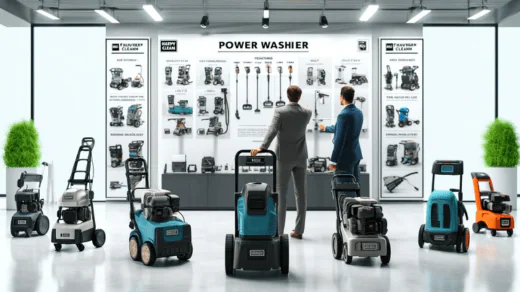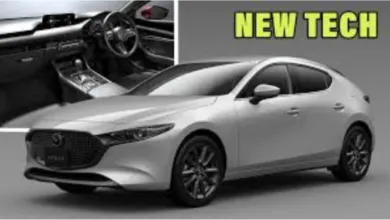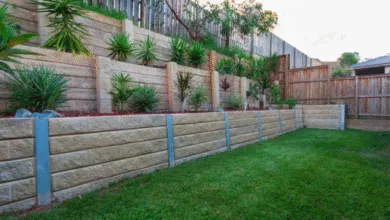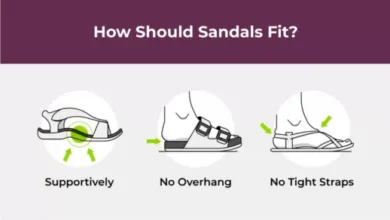Five Essential Tips for Effective Power Washing

Power washing, often referred to as pressure washing, involves the use of high-pressure water spray to remove dirt, grime, mold, mud, and other stubborn substances from surfaces and objects such as buildings, vehicles, and concrete pathways. This method is highly effective for cleaning large areas quickly and efficiently, which is why it’s a favored choice for both residential and commercial cleaning tasks.
Benefits of Power Washing
One of the main benefits of power washing is its ability to drastically improve the appearance of a structure. Over time, exterior surfaces can accumulate a layer of dirt and organisms that not only look unattractive but can also cause structural damage if not removed. Power washing helps in maintaining the integrity of a building, prolonging the lifespan of the surface material by preventing decay.
Moreover, power washing is environmentally friendly, especially when done correctly. It typically uses less water than traditional cleaning methods because the high pressure means less volume is needed to remove dirt and debris. Additionally, power washing can eliminate allergens that build up on surfaces, improving air quality and reducing health risks associated with mold and dust.
Economic Benefits
For businesses, a clean appearance through regular power washing can attract more customers by enhancing the building’s curb appeal. For homeowners, it can increase property value, particularly if considering selling the home. Power washing is also a preventive maintenance measure that can save money in the long run by avoiding costly repairs due to unchecked accumulation of harmful substances.
Efficiency and Versatility
The efficiency of power washing is evident in its ability to clean various surfaces in a fraction of the time it would take using other methods. This versatility extends to cleaning patios, decks, driveways, siding, and even fencing, making it an indispensable tool for comprehensive property maintenance.
Selecting the Right Power Washer
Choosing the correct power washer is crucial for effective cleaning without causing damage to your property. Power washers come in various sizes and pressure outputs, and selecting the appropriate one depends on the specific tasks at hand.
Types of Power Washers
Power washers are generally categorized into two main types: electric and gas-powered. Electric power washers are suitable for lighter tasks such as cleaning cars, outdoor furniture, and small decks. They are quieter, lighter, and easier to maintain compared to their gas counterparts. On the other hand, gas power washers offer higher pressure output, which makes them ideal for tougher jobs like cleaning large driveways, siding, and stripping paint.
Understanding Pressure Ratings
The effectiveness of a power washer is often dictated by its PSI (pounds per square inch) and GPM (gallons per minute) ratings. The PSI measures the pressure of water, determining how forcefully the water will hit the surface, while GPM measures the flow rate, affecting how quickly the washer can clean. For residential use, power washers typically range from 1300 to 2400 PSI, which is sufficient for most home applications without risking damage to paintwork or masonry.
Features to Consider
As per Happy Clean, “when selecting a power washer, consider features that enhance usability and efficiency. Look for models with adjustable nozzles or interchangeable tips, which allow you to change the water pressure and spray pattern depending on the cleaning task. Some models also include onboard detergent tanks that make it easy to apply cleaning solutions for an even deeper clean.”
Matching the Washer to the Job
It’s important to match the power washer to the type of job you plan to tackle:
Light-duty: Ideal for small, delicate tasks. Typically, these have a PSI of 1300-1800.
Medium-duty: Best for general home maintenance, with a PSI range of 1900-2800.
Heavy-duty: Suitable for large areas and tough stains, offering more than 2900 PSI.
By selecting the right type of power washer and understanding its specifications, you ensure both the safety of your surfaces and the efficiency of your cleaning efforts. This thoughtful selection process leads to better cleaning results and prolongs the lifespan of both the surfaces you clean and the equipment itself.
Preparation Steps Before Power Washing
Before you begin power washing, proper preparation is crucial to ensure safety and to protect your property from unintended damage. Taking the right preparatory steps can also help you achieve the best possible cleaning results.
Clearing the Area
Start by removing any movable objects from the area to be cleaned. This includes outdoor furniture, potted plants, and vehicles. Clearing the space not only protects these items from water damage but also gives you unobstructed access to the surfaces you intend to clean.
Inspecting and Securing Windows and Doors
Check all windows and doors in the cleaning area to ensure they are closed and securely sealed. This prevents water from entering your home or building, which could cause water damage or mold growth. Cover any vulnerable fixtures with waterproof covers if necessary.
Checking for Damages
Examine the surface you plan to clean for any cracks, loose pieces, or signs of damage. Power washing damaged areas can exacerbate problems, leading to further repairs. If you find significant damage, repair these areas before washing, or adjust your cleaning technique to avoid them.
Sweeping and Pre-Cleaning
Sweep or brush away loose dirt and debris from the surfaces. Removing larger particles beforehand can prevent scratches or other damage during the high-pressure wash and makes the cleaning process more efficient.
Applying Detergent
For extremely dirty or stained surfaces, applying a detergent can enhance cleaning effectiveness. Some power washers have detergent tanks for this purpose. Choose a detergent suitable for your power washer and the type of surface you are cleaning. Apply the detergent and let it sit for a few minutes to break down the dirt before rinsing it off with high-pressure water.
Planning Your Approach
Strategize your cleaning to ensure smooth execution. Plan to start from the top of vertical surfaces and work your way down to prevent dirty water from running over already cleaned areas. For horizontal surfaces, work in sections, systematically moving from one section to the next to ensure complete coverage.
Best Practices for Power Washing Different Surfaces
Power washing can be used on a variety of surfaces, each requiring specific techniques to ensure effective and safe cleaning. Understanding how to approach different materials will prevent damage and enhance the cleanliness of the surface.
Concrete Cleaning
Concrete driveways, walkways, and patios are common candidates for power washing. Use a medium to high-pressure setting to remove tough stains and buildup. Pre-treat any oil stains or deep-seated dirt with a degreaser or cleaning solution before washing. Move the spray in a consistent, sweeping motion to avoid leaving streaks or lines.
Wood Surfaces
When cleaning decks or wooden furniture, use a lower pressure setting to prevent the water from damaging the wood. A rotating or fan nozzle can distribute the pressure evenly and reduce the risk of gouging the wood. Apply a wood cleaner before washing to help lift dirt and restore the wood’s appearance. Always spray along the grain to ensure the best results and avoid splintering.
Vinyl Siding
Vinyl siding is susceptible to warping under high heat and pressure, so it’s crucial to use a gentle setting. Use a wide-angle nozzle to spread the force of the water over a larger area. Start from the top and work your way down to prevent streaks, and keep the nozzle moving to avoid focusing the pressure in one spot for too long.
Vehicles
Power washing can be an effective way to clean vehicles, but it requires careful handling to avoid damaging the paint or mechanical components. Use a low-pressure setting and a wide nozzle. Avoid spraying directly at engine components or the undercarriage where water could force grease out of essential areas.
Paved Stone and Brick
Paved surfaces like stone and brick pathways can be cleaned effectively with power washing. Use a medium-pressure setting to avoid dislodging the mortar or pavers. Pre-soak the area with water to soften accumulated dirt, and if necessary, use a cleaner designed for stone or brick to enhance the cleaning power.
Tips for All Surfaces
Regardless of the surface, always test the pressure setting on a small, inconspicuous area before proceeding with the entire surface. Adjust the distance and angle of the spray to find the most effective cleaning method that does not harm the material. Regular maintenance cleans will reduce the need for high pressures and aggressive cleaning, preserving the integrity and appearance of your outdoor surfaces.





